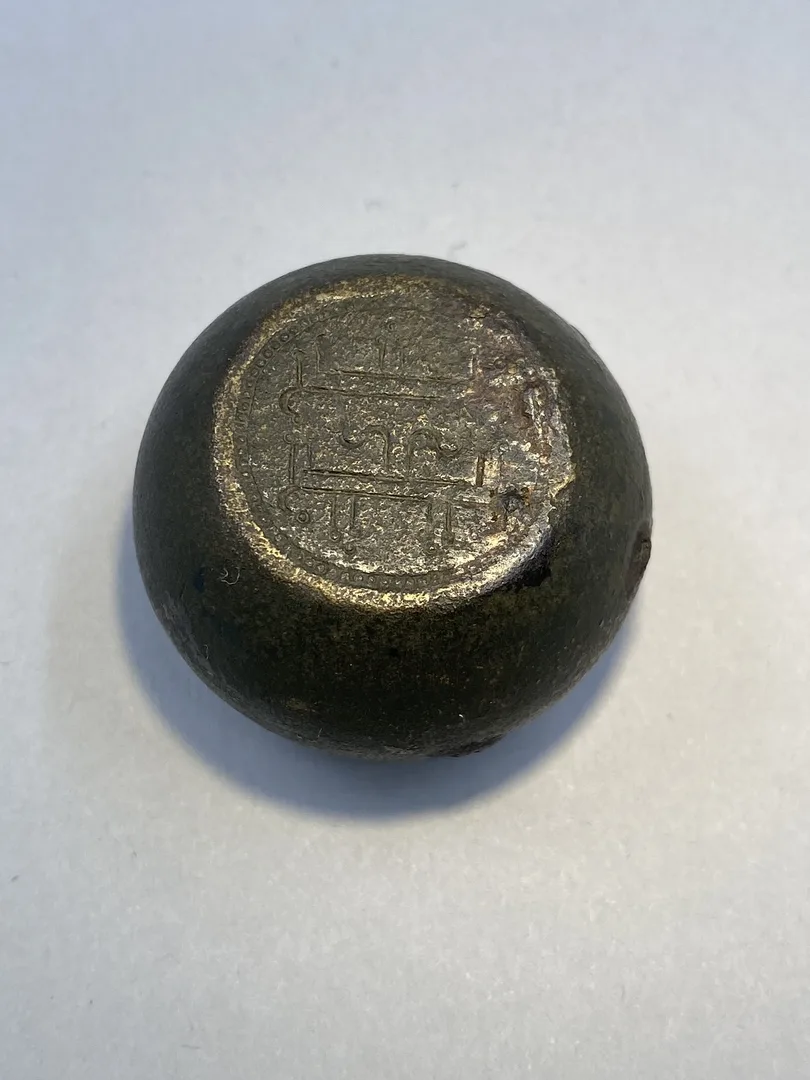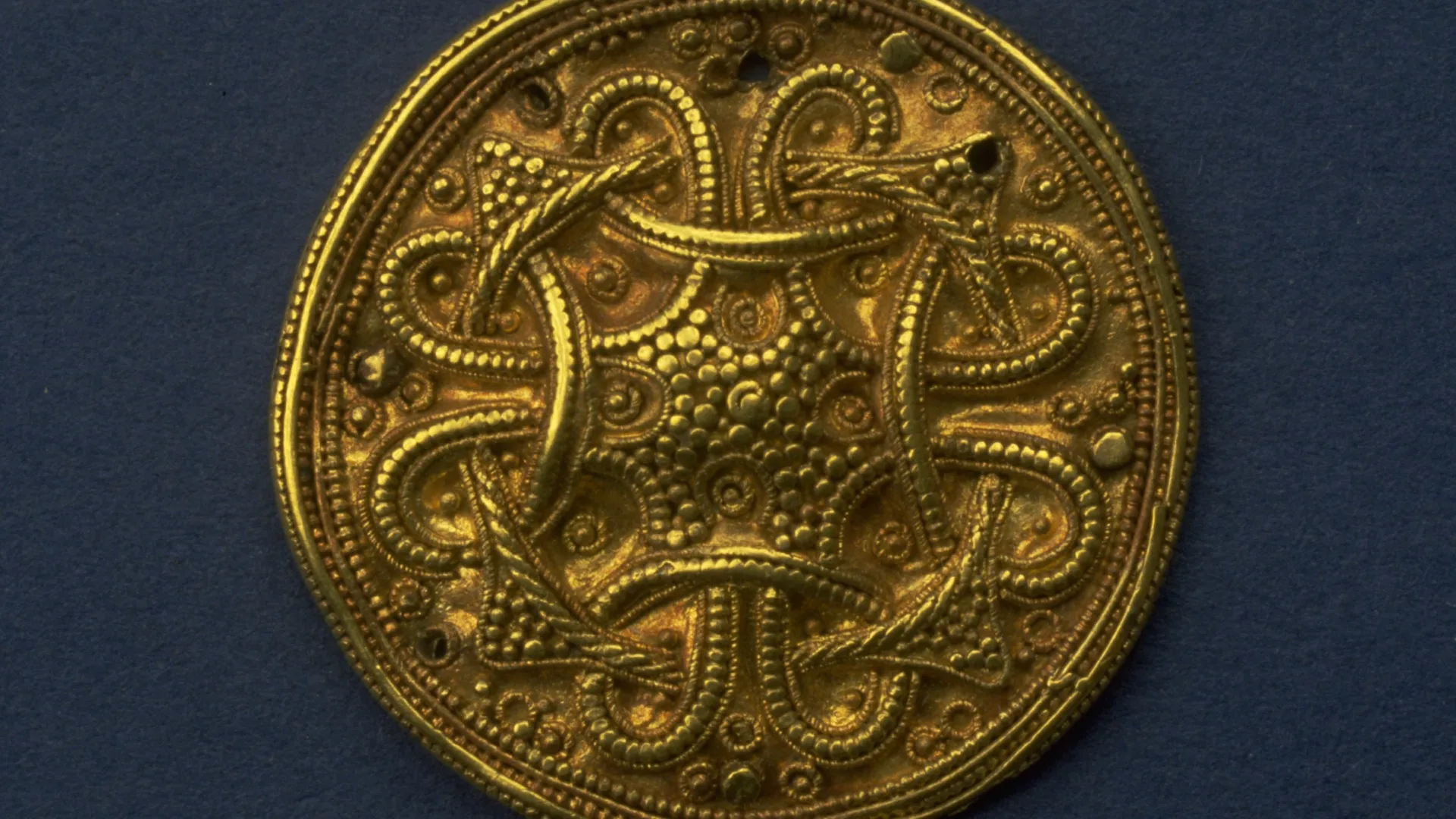Pseudo-Arabic on a Viking Age weight
Iron Age
500 BC – AD 1100
Viking Age
AD 800 – AD 1100
Middle Ages
AD 1050 – AD 1520
There were also occasions when people tried to make objects, for example weights used in trade, appear more “Eastern” by decorating them with text resembling Arabic. There is an example of this in the collections of the Swedish History Museum.
In the Viking Age, payment was made according to the weight of the metal. Many coins and silver objects were therefore cut up into smaller pieces depending on how much silver was required at the time. This made scales and weights a necessary part of a merchant’s equipment.
Scales and weights in the Viking Age
Sets of weights seem to have been personal belongings that in many cases accompanied their owner into the grave. Scales and weights are found in both men’s and women’s burials. The weights often bore various marks so that the user could easily distinguish their different measures.
There does not appear to have been a standardised system for how these weight marks worked. Rather, it seems that each set had its own system of markings.
Pseudo-Arabic decor
A commercial transaction in the Viking Age was a practical and visual procedure. Handling the balance scales required a steady hand, and one can imagine silver and weights being placed into and out of the pans while the price of a commodity was discussed.
The design and decoration of the weights would surely have been carefully noted. Here there was room for personal expression, for example decoration that resembled Arabic script.

Weight
Weight of iron with a bronze surface and inscription that looks like Arabic.
An example from the collections
One of the weights in the Swedish History Museum differs from most of the others in the collection. Instead of the usual weight markings of dots and circles, it is decorated on both its upper and underside with finely shaped text.
At first glance, the script gives the impression of being Arabic, especially to someone who does not read Arabic. On closer inspection, however, it turns out that the text cannot be read at all – it is merely an imitation of Arabic writing.
Unfortunately, there are no records of where or when this weight was found. There is, however, no doubt that it comes from the Viking Age. Its form is typical of the period, and the “Arabic” inscription is not entirely unique either. There are estimated to be at least a dozen Viking Age weights in different collections around the country with inscriptions resembling Arabic.
The weights with pseudo-Arabic inscriptions are all of ordinary Scandinavian type and made within Scandinavia. The text was probably also produced there, with inscriptions on Islamic coins serving as models.
In the inscriptions one Arabic word from Islamic coins is almost always correctly reproduced – including on this weight. The word is bakh, written twice in the inscription, mirrored against each other.
Bakh means something like “prime” or “excellent”. Since this word is repeatedly included in pseudo-Arabic inscriptions, it must have carried a special significance, though what that was is unknown. Perhaps the word functioned in much the same way as a quality stamp.
We know little about this particular weight, but it most likely belonged to a merchant’s set, within which it was the heaviest piece. What the other weights looked like, and how they were decorated, is impossible to know. But we can assume that the person who used this weight made a deliberate choice in its decoration.
Engaging in trade meant many, and sometimes long-distance, contacts with both sellers and buyers, as well as considerable travel. In Scandinavia there was a great curiosity about the wider world, and for a merchant it was important to present oneself as well-travelled, worldly, and knowledgeable in the proper conduct of trade.
In this case, the merchant probably sought to enhance that image with the help of an inscription intended to pass for genuine Arabic. Whether or not those around him were taken in is another question.





